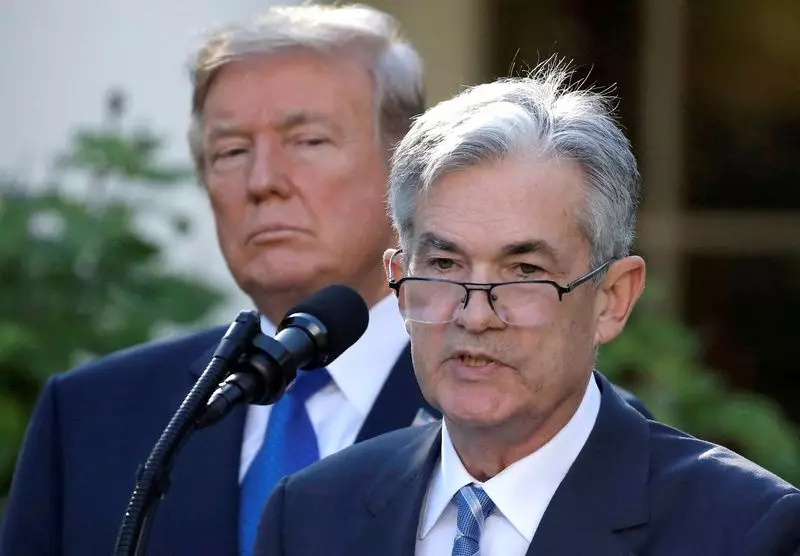In a recent interview, President-elect Donald Trump addressed the question of whether he would attempt to replace Federal Reserve Chair Jerome Powell upon taking office in January. He explicitly stated that he did not envision making such a move, indicating a potential shift in tone from his past criticisms of the Fed’s leadership. Trump’s assertion that Powell would likely not resign voluntarily if requested highlights the complex dynamics at play — a powerful leader clashing with an independent central bank chief. This situation underscores a fundamental contradiction in Trump’s approach to economic leadership; while he advocates for reduced borrowing costs, his relationship with Powell suggests a brewing conflict on monetary policy.
Trump’s relationship with the Federal Reserve has been anything but conventional. Traditionally, U.S. presidents have maintained a respectful distance from the central bank, recognizing its legal independence and critical role in managing the economy. However, during his first term, Trump frequently criticized Powell publicly, contravening the norm of presidential restraint regarding Fed matters. His assertions that he should influence the Fed’s decisions reflect a broader concern that a president’s intrusion could undermine the essential independence of the central bank. This historical context is vital for understanding the potential challenges and tensions that may arise as Trump navigates his second term.
One of the main implications of Trump’s approach to the Federal Reserve lies in his economic policies, particularly his vow to lower mortgage rates. While aimed at enhancing affordability for American households, the tension between this goal and Powell’s mandate to maintain economic stability could lead to significant challenges. If Trump insists on actions that may lead to lower interest rates, it could risk reigniting inflationary pressures — a primary concern for the Fed. Trump’s push for across-the-board tariffs could exacerbate this issue, complicating Powell’s objectives of controlling inflation, thereby placing both men at odds regarding fiscal and monetary policy alignment.
Jerome Powell has repeatedly expressed his commitment to act independently of political pressures. In response to Trump’s previous contemplation of dismissal, Powell stated that such actions are not permitted by law. His steadfastness indicates a strong resistance to political intervention, serving as a bulwark for the Fed’s autonomy amid external pressures. The notion that he could disregard Trump’s directives reflects a principled adherence to the norms of central banking — a necessary ingredient for maintaining market confidence. Powell’s ability to maintain this independence will be closely scrutinized in a volatile political environment.
As the impending Fed meeting on December 17-18 approaches, traders are speculating about potential rate cuts. A reduction of a quarter-percentage-point would represent a shift in monetary policy aimed at addressing signs of economic slowdown reflected in recent labor market data. Such a decision, while ostensibly aligned with reducing borrowing costs to stimulate economic growth, may directly conflict with Trump’s aspirations for further easing. The question remains whether Powell will prioritize the economic indicators or yield to Trump’s political pressures, shaping the immediate economic landscape.
The dynamic between President Trump and Federal Reserve Chair Jerome Powell highlights the complexities of governing in a politically charged environment. While Trump’s initial approach suggests a more conciliatory attitude towards Powell, the underlying tension centered on economic directives remains palpable. As Trump embarks on his second term, one must question how his ambitious economic pursuits will align with Powell’s commitment to maintaining the Fed’s independence. The intersection of political influence and monetary policy will undoubtedly influence future economic stability, making it crucial to monitor how these two powerful entities interact moving forward.

